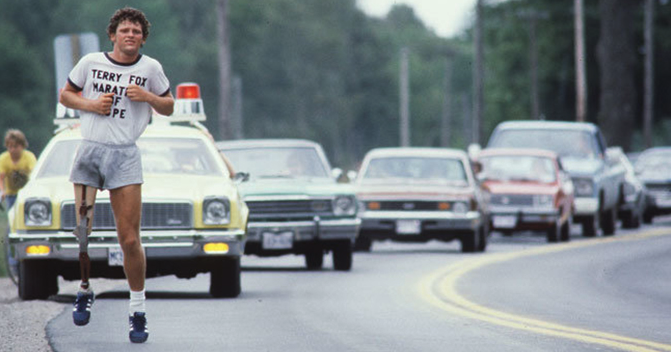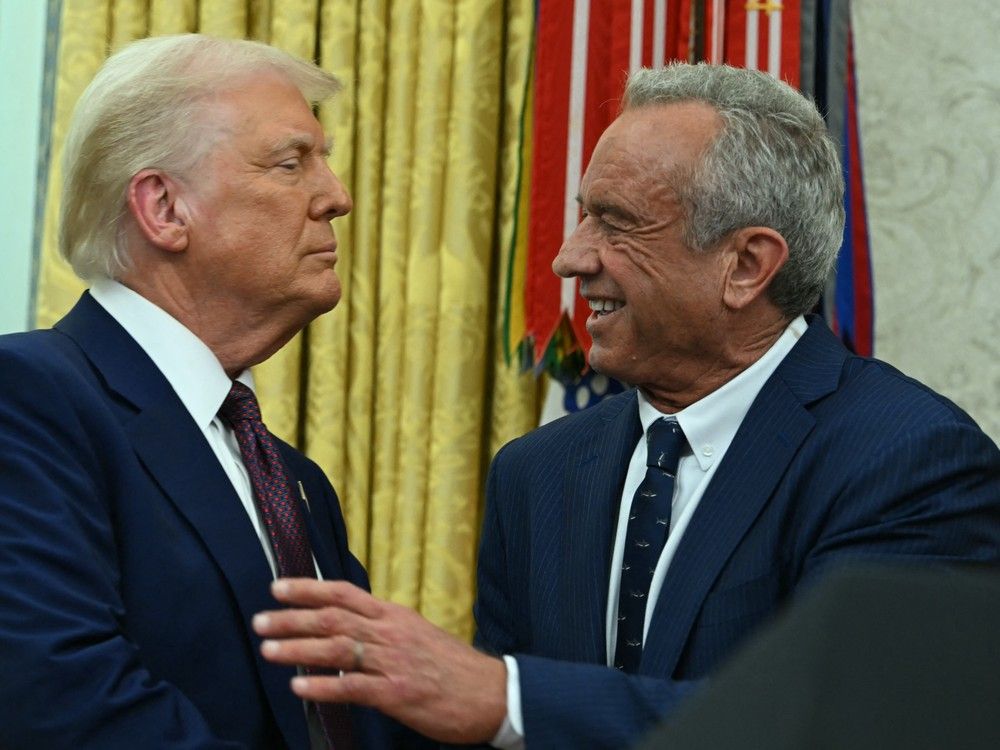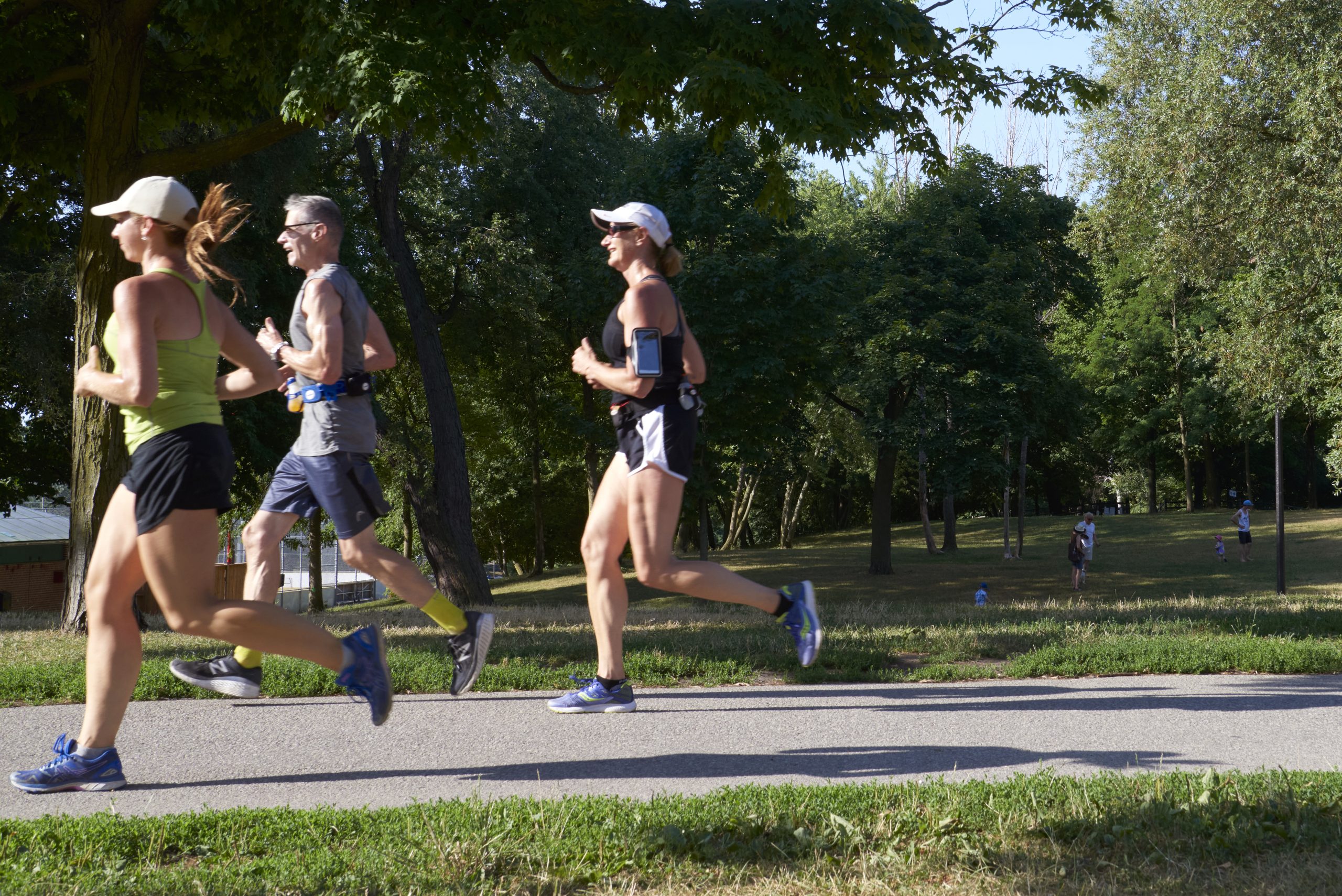It’s a simple sneaker, really — two tones of navy blue dissected by three thick stripes of white.
But no shoe is more iconic in Canadian culture than the Orion, popularized by Terry Fox during his 1980 marathon across the country, a heroic trek that raised tens of millions of dollars and inspired several generations of Canadians.
To mark the upcoming 45th anniversary of the Marathon of Hope, the Terry Fox Foundation and Adidas Canada announced that they will re-release a limited edition of the Orion shoe, with proceeds going toward cancer research.
The runners, which will feature the words “Terry Fox” in gold stitching and commemorative shoelaces, will be available starting July 3 at 10 a.m. ET.
“It’s heartwarming to see Canadians across the country continue to resonate with Terry’s legacy more than 45 years later,” Fred Fox, Terry’s older brother, said in a press release. “We hope that these shoes will serve as an inspirational reminder that it’s up to all of us to finish the marathon against cancer that Terry started.”
Adidas Canada noted that the last time it dropped the Orion was in 2020; the shoes sold out within minutes.
The Orion re-release is the latest example of Fox’s lasting influence on Canadian society and his status as a symbol of resilience decades after his death.
Last December, it was revealed that Fox’s face will soon replace that of former Prime Minister Sir Wilfrid Laurier on Canada’s $5 bank note. In May, the Terry Fox Foundation announced that the annual Terry Fox Run will return to the 13-kilometre Confederation Bridge between New Brunswick and P.E.I. after a decade-long hiatus.
Born in Winnipeg in 1958, Fox and his family moved to Port Coquitlam, B.C., in the mid-1960s. As a teenager, Fox was a competitive athlete, playing basketball and running cross-country.
At 18, Fox was diagnosed with osteosarcoma, a form of cancer that often starts near the knees. His right leg was amputated shortly after, but that did not slow him down.
Within weeks, Fox was walking with the help of an artificial leg. Within months, he had mastered the sport of wheelchair basketball, and would go on to win three national titles.
In 1979, Fox began training to compete in a marathon and developed a distinctive gait to accommodate his prosthetic. Later that year, he wrote a letter to the Canadian Cancer Society, reflecting on his “physically and emotionally draining” experience with chemotherapy. He announced that he would be running across Canada in an attempt to raise funds for cancer research, pledging to complete the trek even if he had to “crawl every last mile.”
“I’m not a dreamer, and I’m not saying that this will initiate any kind of definitive answer or cure to cancer, but I believe in miracles. I have to,” he wrote.
Fox began his Marathon of Hope on April 12, 1980, after dipping his artificial leg in the Atlantic Ocean near St. John’s, N.L. A month later, he arrived in P.E.I. via a ferry and continued his journey west.
Over the next 143 days, Fox ran 5,373 kilometres, an average of 42 kilometres per day (about the length of a marathon). On Sept. 1, 1980, his journey came to an end just outside Thunder Bay, Ont., after doctors confirmed that his cancer had spread to his lungs. By that point, Fox’s efforts had raised an extraordinary $24.7 million.
Two weeks later, he was made a Companion of the Order of Canada. To this day, he remains the youngest Canadian to receive this honour.
Fox died on June 28, 1981, just a month before his 23rd birthday.
Each year since his death, thousands of Canadians take part in the annual Terry Fox Run in about 600 communities across the country. To date, the foundation has raised more than $950 million and paid for more than 1,300 cancer research projects.



